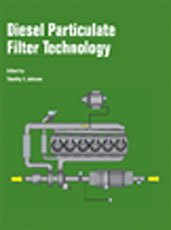Technical Paper
A New Converter Concept Providing Improved Flow Distribution and Space Utilization
1999-03-01
1999-01-0768
A new converter concept is introduced, which utilizes the additional space in the inlet cone of the converter. An optimized design is obtained by the application of computational fluid dynamics (CFD) and flow distribution measurements, resulting in up to 20% improved flow distribution through the substrate. In addition, the volume of the converter can be increased by approximately 15% using the same space envelope. Durability tests of the converter system have been performed using a thermal cycling test on an engine test bench for 135 hours. No deterioration of the substrate or mounting system occurred. The emissions performance was evaluated on a stationary dynamometer. The impact of the flow distribution on the temperature field and the conversion behavior during light-off and steady state operation were investigated. Under the current testing conditions, no differences in light-off behavior were determined, despite significant differences in the temperature field.

